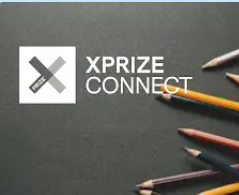With the onset of COVID-19, educational systems everywhere have been forced to find new ways to safely instruct their students. Here in Philadelphia, our school district has been 100% virtual since April of 2020, giving us a lot of time to assess how to best help our learners. One of the things to take into account is how different students learn. What I’m referring to are learning styles – the ways in which students absorb, process, comprehend, and retain information.
There are generally seven recognized learning styles, which are: visual, verbal, aural, physical, logical, social, and solitary. In a virtual environment, it is just as important to understand and address these styles as it is with in-person instruction. At Inner Strength, ISF Instructor Haylee Warner and ISF Program Coordinator Madison Wagner are spearheading the effort to create additional teaching supports to help instructors develop their own best practices for their online classes.
Here is a breakdown of the learning styles and the strategies that Haylee and Madison have created for each:
Visual Learners: Visual learners learn best when they can see. To better serve these students, use engaging images, videos, charts, graphs, and colors by presenting a lesson with slides. These slides can be interactive, evocative through imagery, or provide clarity through bulleted lists.
Verbal Learners: Verbal learners have to talk or express in their own words what they are learning for concepts to stick. To support verbal learners, create space for students to verbally process information by inviting them to unmute their microphones or by using pair shares/breakout rooms. Another strategy is to offer fun acronyms or tongue-twisters to help them remember tools.
Aural Learners: Aural learners remember sounds. To support aural learners you can share background music during journaling or at the start of class, curate a playlist ahead of time that illustrates the main themes, or even include sound effects, movie clips, or short video memes that will represent the themes you are teaching.
Physical Learners: Physical or somatic learners learn through touch. Remember “Head, shoulders, knees and toes” when you were a little kid? Touching the body parts while saying their names was a great example of somatic learning. Practicing embodied learning can also be helpful, like asking for raised hands to gather feedback. Because mindfulness also has a physical element, instructors can guide students through mindful movements and exercises. And try using interactive slides that invite more hands-on learning (ex. dragging and editing text or images).
Logical Learners: Logical learners need to see causality or a linear progression to make sense of concepts. These learners like to know “how” something came about in order to remember facts, the “what.” To support their logical view, show them systems, steps, formulas. Create an inviting/safe space for asking questions, whether through word clouds, Q&As, the class chat, and unmuting and facilitating a group discussion. Include tasks that involve categorization.
Social Learners: Social learners retain better when they are in a group of peers. The process of being together, talking, sharing helps information stick. Especially during COVID, social learners are feeling challenged. Support these students by giving them more time in breakout groups, or use Jamboards to create a class-wide collective brainstorming project.
Solitary Learners: Solitary learners like to process on their own. They need time to think things through. They listen and pay attention but their comfort zone is taking the raw material and digesting it on their own. To support solitary learners, instructors can leave time for students to journal and reflect before inviting responses. Allow these students time to absorb material. To create a safe space for sharing, instructors can suggest that students turn off their video functions if they desire.
What are you doing to meet the different learning styles of your students during COVID? Share your tips in the comments! We can all use some ideas and inspiration to best serve the needs of all our learners and their different retention styles.





1 thought on “7 Ways Students Learn: How to Take Learning Styles In Account When Teaching in a Virtual World”
Excellent site you have got here.. It’s hard to find quality writing like yours
nowadays. I really appreciate individuals like you!
Take care!!